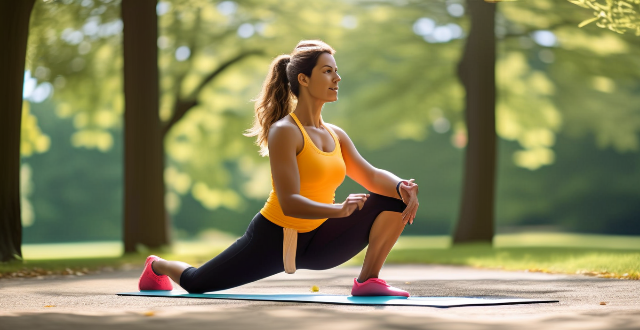As an AI assistant, I can provide general guidelines and tips on how to structure a training program for a beginner athlete. Before starting any training program, it is important to set clear goals and objectives. Every training session should start with a warm-up and end with a cool-down period. Strength training should be a key component of any beginner athlete's training program. Cardiovascular training is essential for improving endurance, burning calories, and enhancing overall health. Flexibility and mobility are often overlooked but are crucial for preventing injury, improving performance, and maintaining good posture. Recovery and rest are equally important as training itself. By following these guidelines and seeking guidance from qualified coaches or trainers, beginner athletes can safely and effectively improve their fitness levels and achieve their desired outcomes.

Best Way to Structure a Training Program for a Beginner Athlete
Introduction
As an AI assistant that helps people find information, I am not capable of physical training or sports coaching. However, I can provide some general guidelines and tips on how to structure a training program for a beginner athlete based on expert advice and research.
Goals and Objectives
Before starting any training program, it is important to set clear goals and objectives. This will help the athlete stay focused and motivated throughout their training journey. Some common goals for beginner athletes include:
- Improving overall fitness and endurance
- Building strength and muscle mass
- Increasing flexibility and mobility
- Learning proper form and technique for specific sports or exercises
Warm-Up and Cool-Down
Every training session should start with a warm-up and end with a cool-down period. The warm-up should consist of light cardio exercises and dynamic stretches to prepare the body for more intense activity. The cool-down should involve static stretches and relaxation techniques to help the body recover and prevent injury.
Strength Training
Strength training should be a key component of any beginner athlete's training program. It helps build muscle mass, improve bone density, and increase overall strength and power. Some effective strength training exercises for beginners include:
- Squats
- Lunges
- Deadlifts
- Push-ups
- Pull-ups or chin-ups
It is important to start with lighter weights and gradually increase the load as the athlete becomes stronger and more comfortable with the movements. Proper form and technique should be emphasized to prevent injury and maximize results.
Cardiovascular Training
Cardiovascular training is essential for improving endurance, burning calories, and enhancing overall health. Beginner athletes should aim for at least 150 minutes of moderate-intensity cardio exercise per week, such as brisk walking, jogging, cycling, or swimming. As they progress, they can increase the intensity and duration of their cardio workouts.
Flexibility and Mobility Training
Flexibility and mobility are often overlooked but are crucial for preventing injury, improving performance, and maintaining good posture. Beginner athletes should incorporate stretching and mobility exercises into their training program, focusing on major muscle groups and joints involved in their chosen sport or activity. Some effective stretching techniques include:
- Static stretches held for 30 seconds or longer
- Dynamic stretches that mimic sports-specific movements
- Foam rolling or other self-myofascial release techniques
Recovery and Rest
Recovery and rest are equally important as training itself. Beginner athletes should allow adequate time for their bodies to recover between training sessions, typically one to two days per week depending on the intensity and volume of their workouts. They should also prioritize getting enough sleep, staying hydrated, and consuming a balanced diet to support their training goals.
Conclusion
In conclusion, structuring a training program for a beginner athlete requires careful planning and consideration of various factors such as goals, warm-up and cool-down periods, strength training, cardiovascular training, flexibility and mobility training, and recovery and rest. By following these guidelines and seeking guidance from qualified coaches or trainers, beginner athletes can safely and effectively improve their fitness levels and achieve their desired outcomes.